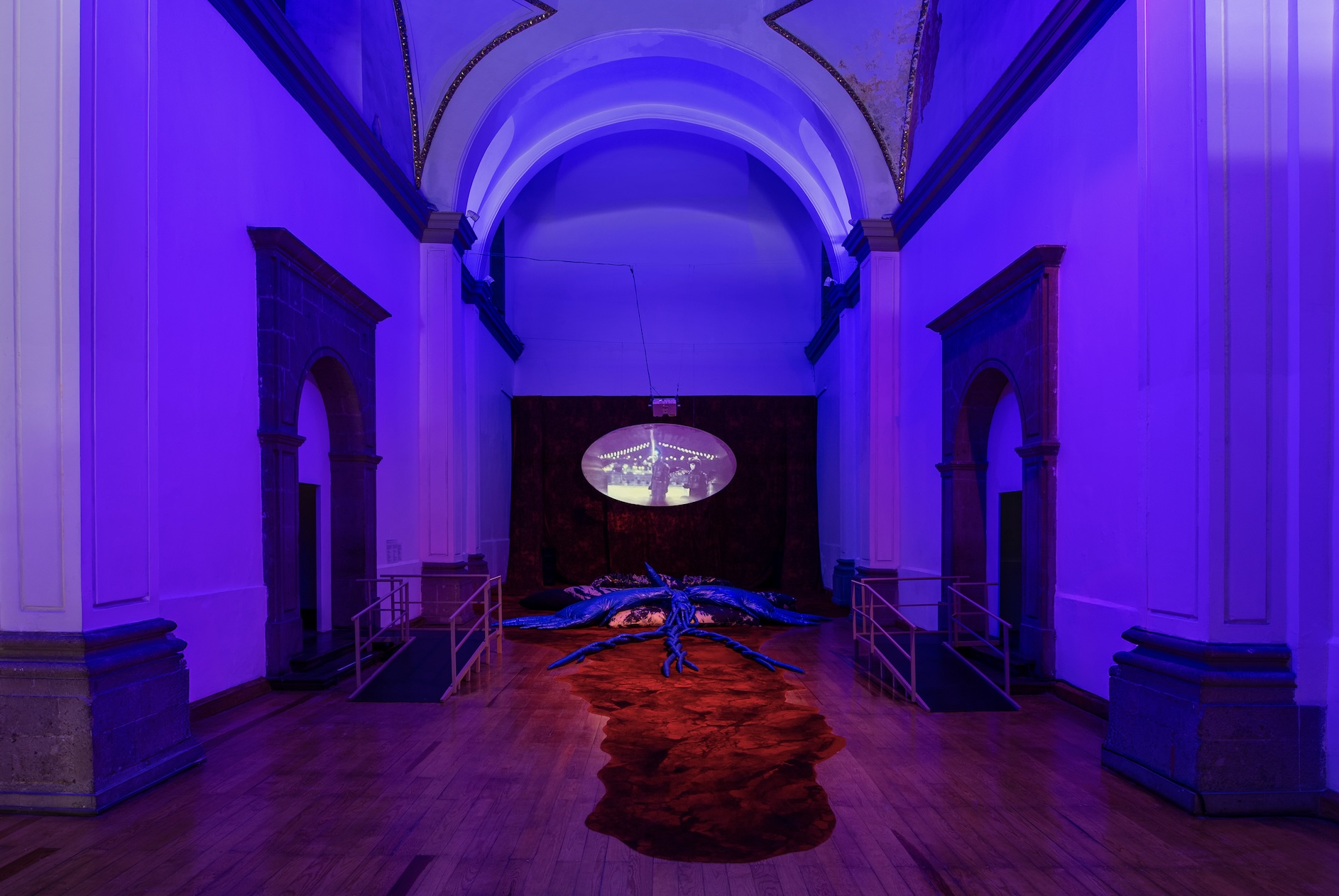
Review
The Sacred in Times of Extermination: On “Pray” by Korakrit Arunanondchai and Alex Gvojic at the Laboratorio Arte Alameda
by Stefanía Acevedo
Reading time
4 min
"Every new freedom begins with a sacrifice," reads a line from the poem that accompanies Pray (2022), an installation by Korakrit Arunanondchai composed of two audiovisual pieces co-directed in 2021 with Alex Gvojic: Songs for Dying and Songs for Living. The phrase, borrowed from anarchist philosopher Simone Weil, appears just as apocalyptic images emerge—visions of a lost world’s past. In that bygone time, military figures with black wings glide across deserted landscapes on electric scooters. Pray is an omen, revealing the ruins of a civilization that devolved into imprisonment and policing, where only a few beings survive to reawaken the sacred in the world.
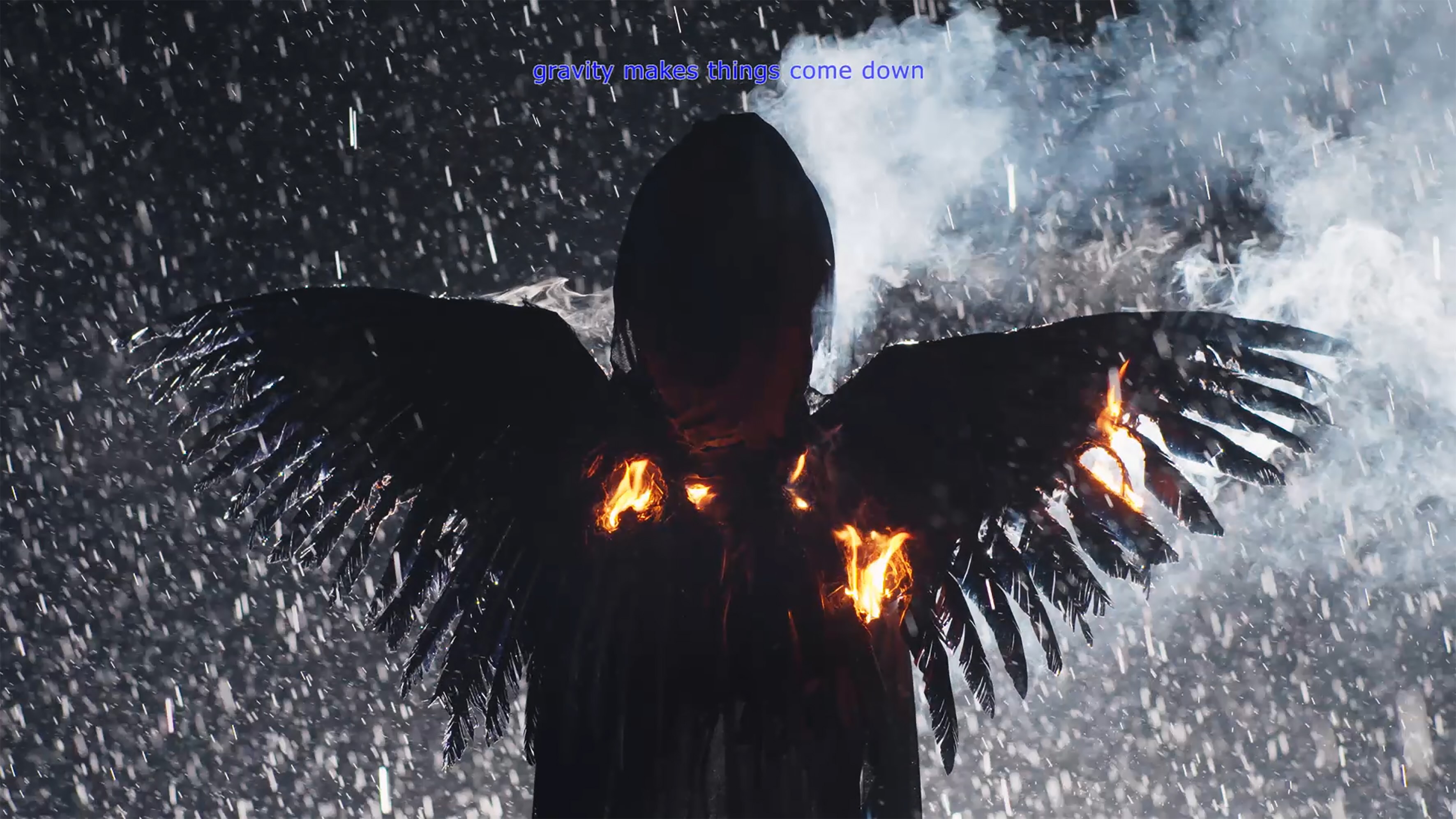
Sacrifice, from the Latin sacrum facere (to make sacred), means precisely that: to consecrate things. The sacred encompasses everything beyond human hands, beyond our agency, and cannot be conveyed through argument or logic devoid of contradiction. Other means are needed for the sacred to reveal itself; this is the space of ritual, where what lies outside human power can manifest. The need for the sacred lies in setting a limit on a conception of human freedom as boundless will and action without consequence. The sacred imposes an order of care and respect, defining what must remain inviolable. To make the world sacred again would be to summon a harmony—often cyclical—that ensures beginnings and endings. In Pray, such rituals are evoked through dances around a bonfire and contemplative movements like tai chi.
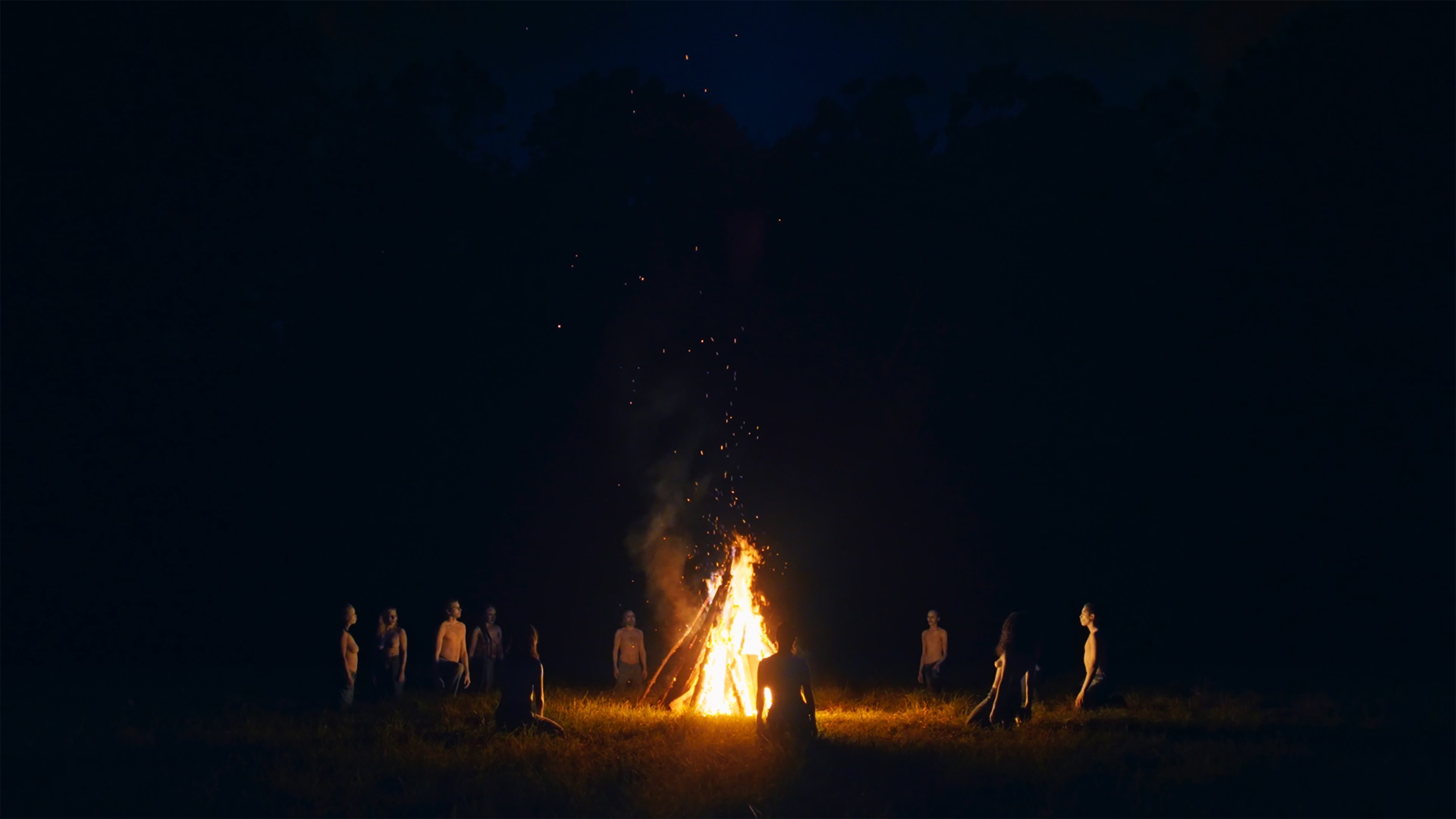
The sacred also calls for prayers, songs, and sounds that summon it. Prayers are repeated because there is something in their rhythm that strengthens the possibility of the sacred event. This repetition is an act of learning by heart—apprendre par cœur, in French—because these prayers can only truly emerge from the heart. Even when recited in silence, they seek to be heard. To pray is to acknowledge that human agency has limits. In Pray, the poem’s verses are accompanied by a range of sounds, from serene melodies to improvised drumming and guitar, escalating into densely saturated noise.
But what happens when the world we inhabit has lost the sacred, when no limits remain to halt genocides and cruelty? What rituals can still be performed to call forth that which should never be violated or transgressed? Increasingly, those boundaries seem to be eroding: human and non-human lives alike become disposable, subject to exploitation. The freedom of some stands upon the oppression of others. For Simone Weil, the sacred resides in the preservation of inviolable spaces within life itself, protected under the name of "dignity." From her own Jewish heritage, Weil opposed the creation of any State or nationalism that justified the annihilation of other peoples.
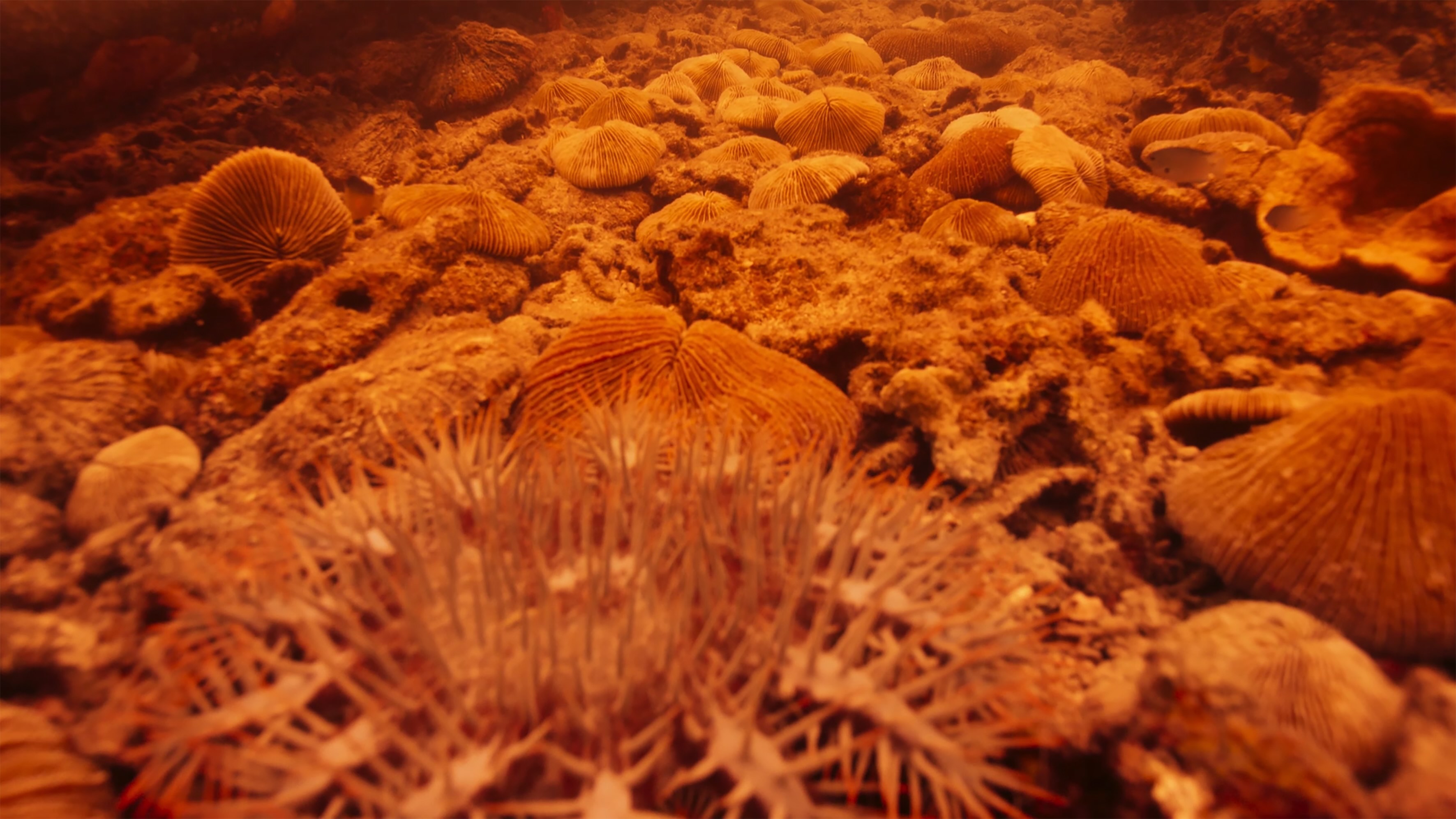
The destruction of territories is portrayed in Pray through glimpses of marine life: fish, turtles, and mollusks appear among submerged tubes. One mollusk emerges from the screen, becoming part of the installation. Its large blue tentacles greet us upon a red carpet that resembles a pool of blood. The carpet stretches across large cushions that imitate the rocks of underwater landscapes. There, spectators recline to contemplate a screen that is not rectangular—the usual shape through which we view the world—but oval, like our eyes. The same red carpet extends behind the screen, now forming heavy curtains.
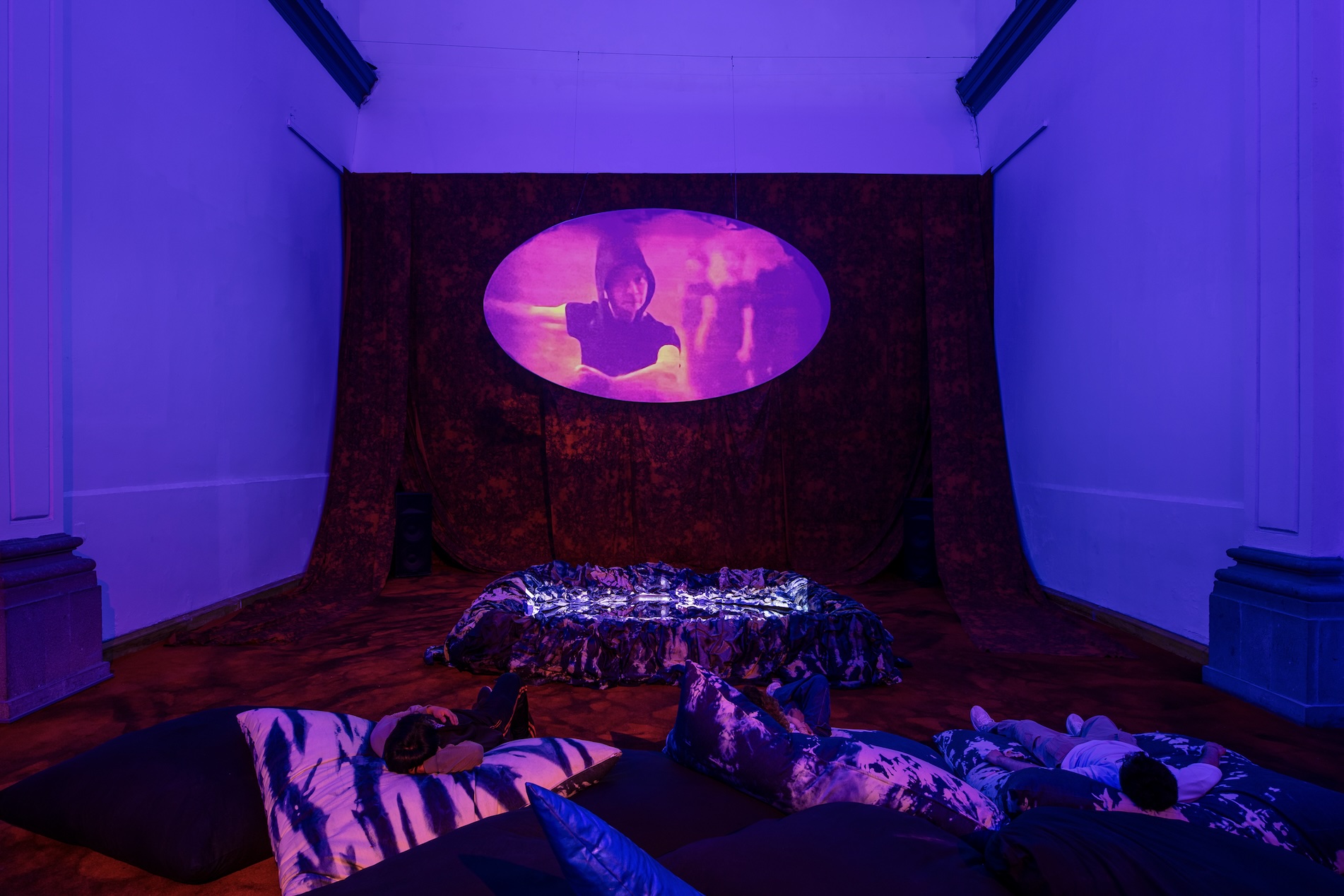
This oval shape reappears in a "lake" crafted from fabric and a metallic sheet. Lakes act as intermediaries, which is why the entire video is projected onto it; simultaneously, the lake reflects its images back onto the screen. This gesture reminds us that the sacred always appears like a mirage, a reverberation that never quite resolves into clarity. The piece invites us to consult the lakes—bodies of water that hold the stories of all life they have witnessed. If we believe in the prophecy that is Pray, what we see in the lake is our own future.
"Every new freedom begins with a sacrifice." Weil’s phrase reminds us of the need to consecrate the world anew, to set down non-negotiable limits that can halt cruelty, oppression, and the belief that human ambition is the ultimate measure of life. Freedom is inaugurated by these limits, becoming a sacred practice itself. Practices of freedom act like compasses, opening the horizon onto the boundaries we can still impose on death-dealing machinery—boundaries where the sacred, the inviolable, and the intransgressible are sheltered. Freedom must be practiced, made into ritual.
Pray is part of TONO 2025 and can be visited until June 15 at the Laboratorio de Arte Alameda.
Translated to English by Luis Sokol
Published on May 4 2025